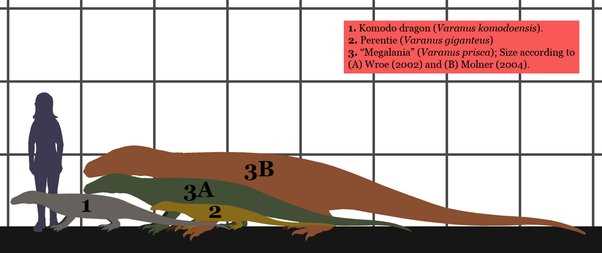
One of the most striking differences between these two giants is their diet. While the Asian Water Monitor is primarily a carnivore, feasting on fish, amphibians, birds, and small mammals, the Komodo Dragon is a formidable predator that has been known to take down large prey, including deer and water buffalo. To subdue their prey, Komodo Dragons use their sharp teeth and powerful jaws to deliver a deadly bite, which is often followed by a venomous bite that helps to immobilize their prey.
In terms of behavior, the Asian Water Monitor is generally shy and will usually flee when confronted by humans or other potential threats. However, if cornered or threatened, it can become aggressive and may deliver a powerful bite. The Komodo Dragon, on the other hand, is known for its aggressive nature and has been known to attack humans, making it one of the few reptile species that pose a real threat to humans.
Asian Water Monitor vs Komodo Dragon: A Comparison of the Giants
The Asian Water Monitor and the Komodo Dragon are two enormous reptiles that are often compared due to their similar appearance and habitat. While they both belong to the same order of Squamata and share certain characteristics, they also have distinct differences that set them apart.
Size and Appearance
Distribution
While both species are found in Southeast Asia, their distributions vary. The Komodo Dragon is endemic to the Indonesian islands of Komodo, Rinca, Flores, Gili Motang, and Padar. On the other hand, the Asian Water Monitor has a much wider range and can be found in countries such as India, Sri Lanka, Bangladesh, Burma, Thailand, Malaysia, and the Philippines.
Habitat
Diet
Hunting Skills
The Komodo Dragon is an ambush predator and relies on its excellent camouflage and patience to catch its prey. They have a keen sense of smell and can detect carrion from several miles away. The Asian Water Monitor uses its sharp claws and powerful jaws to capture its prey. They are also excellent swimmers and can swim long distances in search of food.
Reproduction
The Komodo Dragon reproduces through sexual reproduction and lays eggs. The female lays her eggs in burrows, and the eggs incubate for around 8 months before hatching. The Asian Water Monitor also reproduces through sexual reproduction and lays its eggs in burrows or termite mounds. The eggs hatch after an incubation period of approximately 6 months.
Behavior
Lifespan
The lifespan of both species varies significantly. The Komodo Dragon has an average lifespan of around 30 years in the wild, while in captivity, they can live up to 50 years. The Asian Water Monitor has a slightly shorter lifespan, averaging around 20 years in the wild and 25 years in captivity.
Conservation Status
The Komodo Dragon is classified as a vulnerable species by the International Union for Conservation of Nature (IUCN). They are threatened by habitat loss, poaching, and natural disasters. The Asian Water Monitor, on the other hand, is considered a species of least concern. However, certain populations are threatened due to habitat destruction and hunting.
Interaction with Humans
The Komodo Dragon has gained significant attention due to its size, reputation, and unique characteristics. It is a popular attraction for tourists, and there are several national parks dedicated to their conservation. The Asian Water Monitor is also encountered by humans frequently, especially in rural areas where they sometimes venture into farmlands.
Mythology and Cultural Significance
Both the Komodo Dragon and the Asian Water Monitor hold cultural significance in the regions they inhabit. In Indonesian mythology, the Komodo Dragon is believed to have mythical powers and is considered a symbol of strength and protection. The Asian Water Monitor is also represented in folklore and is considered a sacred creature in some cultures.
Size and Appearance
The Asian water monitor and the Komodo dragon are both impressive giants in their own right, but they have some distinct differences in terms of size and appearance.
Asian Water Monitor
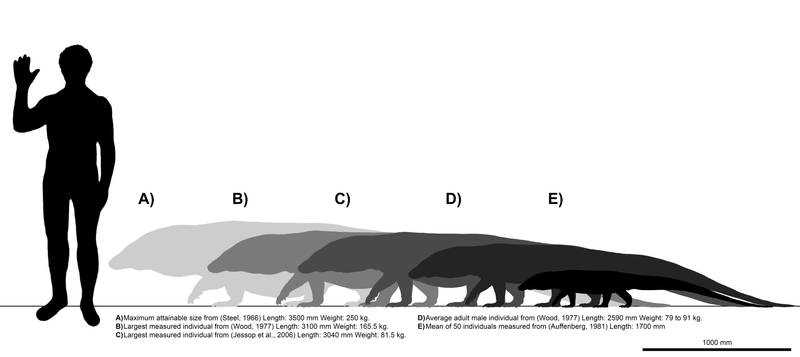
Komodo Dragon
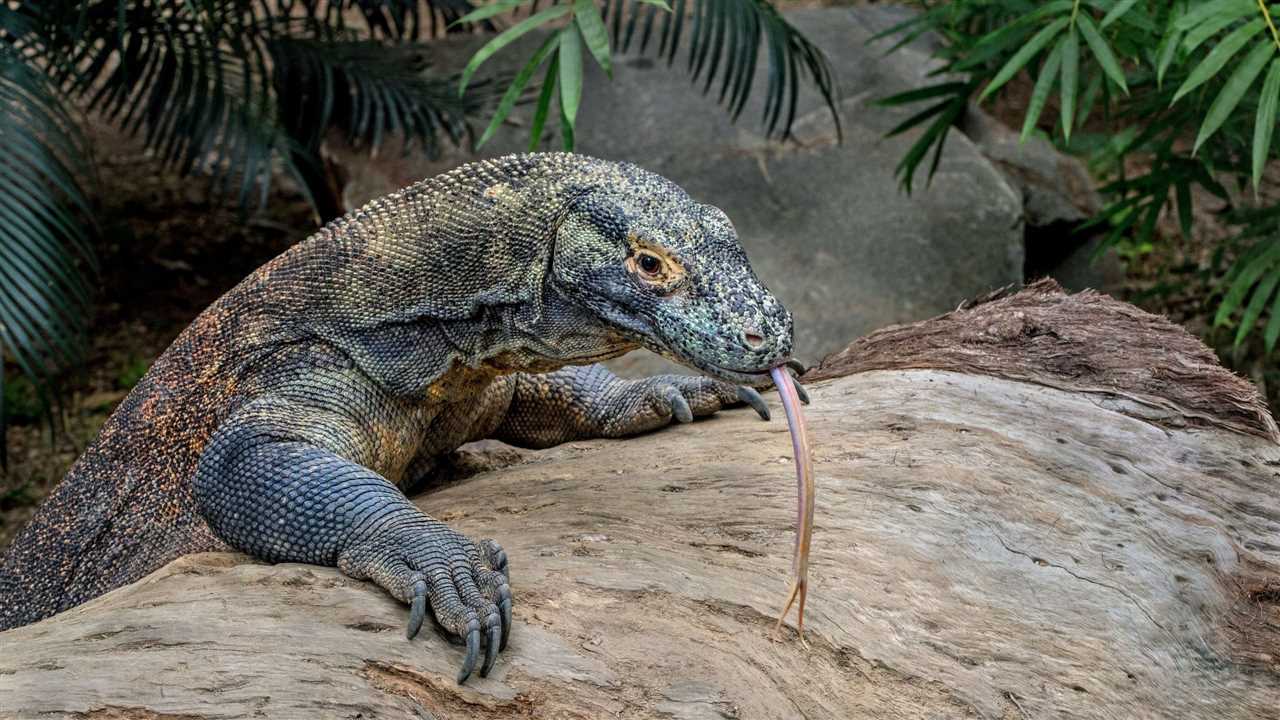
While both the Asian water monitor and the Komodo dragon are impressive in size, the Komodo dragon is generally larger and bulkier compared to the Asian water monitor.
| Asian Water Monitor | Komodo Dragon |
|---|---|
| Average Length: 6 to 9 feet (up to 10+ feet) | Average Length: 8 to 10 feet (up to 12 feet) |
| Stocky body and powerful tail | Robust body and strong legs |
| Dark brown or black coloration with yellow spots or bands | Gray or brown coloration with rough texture |
Distribution
The Asian Water Monitor and the Komodo Dragon are both large reptiles that have a distinct distribution range.
While both reptiles have overlapping distribution in parts of Indonesia, the Asian Water Monitor has a much broader range, covering a larger geographic area compared to the Komodo Dragon.
Habitat
Asian Water Monitor:
Komodo Dragon:
While both the Asian Water Monitor and the Komodo Dragon might be classified as monitors, their distinct habitats have shaped their adaptations and behaviors. The Asian Water Monitor thrives in more aquatic and diverse habitats, while the Komodo Dragon has adapted to survive in the challenging conditions of its dry island habitats.
Dragon, Asian Water vs Komodo: A Comparison of Diet
The diet of the Asian Water Dragon and the Komodo Dragon varies significantly, despite their similarities in appearance. While both dragons are carnivorous, their feeding habits and prey preferences differ.
The Asian Water Dragon primarily feeds on a variety of small prey, including fish, frogs, snails, and insects. It is an adept swimmer and spends a significant amount of time hunting in the water. Its diet also includes small mammals and birds that it catches near water bodies. The Asian Water Dragon has well-developed teeth and powerful jaws, which help it catch and consume its prey.
On the other hand, the Komodo Dragon is known for its voracious appetite and ability to take down large prey. Its diet consists mainly of carrion, but it also hunts and kills live animals, including mammals, birds, and reptiles. The Komodo Dragon has a unique way of hunting, relying on its strong sense of smell to locate its prey. It will patiently wait for the right moment to attack, using its sharp teeth and serrated claws to bring down its prey. After a successful hunt, the Komodo Dragon will use its strong jaws to tear apart its meal.
Both the Asian Water Dragon and the Komodo Dragon have adapted their diets to suit their respective habitats. While the Asian Water Dragon primarily feeds on aquatic creatures, the Komodo Dragon is capable of taking down much larger prey due to its larger size and aggressive hunting behavior.
A Comparison of Hunting Skills: Asian Water Monitor vs Komodo Dragon
Hunting Techniques
Asian Water Monitor: These monitors are excellent ambush predators. They have a keen sense of smell, which allows them to detect prey from a distance. Once they locate a potential target, they patiently wait until the prey is within striking range. With lightning-fast speed, they can catch their prey off guard and deliver a powerful bite. These monitors primarily hunt small mammals, fish, birds, and reptiles.
Komodo Dragon: Unlike the Asian Water Monitor, Komodo Dragons are active hunters. They use their incredible size and strength to overpower their prey. These dragons have a unique hunting technique where they rely on their strong sense of smell to locate carcasses. Once they find a dead animal, they patiently wait for flies to gather around it, signaling the presence of a potential meal. They then follow the scent trail of the flies to locate the living animals, which are attracted to the smell of the rotting flesh.
Hunting Strategies
Asian Water Monitor: These monitors often utilize their excellent swimming abilities to hunt. They can silently stalk their prey underwater, using their long, strong tail to propel themselves forward. Once they spot a suitable prey item near the water’s edge, they swiftly launch themselves out of the water, surprising their victim and catching them off guard. This hunting strategy gives them a significant advantage over their prey.
Komodo Dragon: While Komodo Dragons are formidable hunters, they often rely on their impressive size and strength to overpower their prey. They have a unique hunting strategy where they surround their prey, acting as a group to maximize their chances of success. By working together, they can take down large animals like deer or water buffalo. Once the prey is subdued, the dragons use their sharp teeth and powerful jaws to deliver a fatal bite.
Overall, both the Asian Water Monitor and the Komodo Dragon are highly skilled hunters. While the Asian Water Monitor uses stealth and speed to ambush their prey, the Komodo Dragon relies on its size and strength to overpower animals. These differences in hunting techniques and strategies allow both species to thrive in their respective habitats.
Reproduction
The reproductive strategies of the Asian water monitor and the Komodo dragon are quite different.
The Asian water monitor follows a fairly typical reptilian mating pattern. Mating occurs during the dry season, typically in February and March. The male monitors fight for dominance, and the winner gets to mate with the female. After mating, the female digs a hole in the ground to lay her eggs. She then covers the nest and leaves the eggs to incubate on their own. The eggs hatch after an incubation period of around 6 to 7 months.
The Komodo dragon, on the other hand, has a more complex reproductive process. They are capable of parthenogenesis, which means that females can reproduce without mating with a male. However, when mating does occur, it is a violent affair. The males fight aggressively for the right to mate with a female, often resulting in significant injuries or even death. After mating, the female lays her eggs in a mound and guards them for several months to protect them from predators. The hatchlings emerge after an incubation period of around 7 to 8 months. Interestingly, the sex of the hatchlings is determined by the temperature at which the eggs are incubated.
Overall, both the Asian water monitor and the Komodo dragon have fascinating reproductive behaviors that contribute to the survival of their species.
Behavior
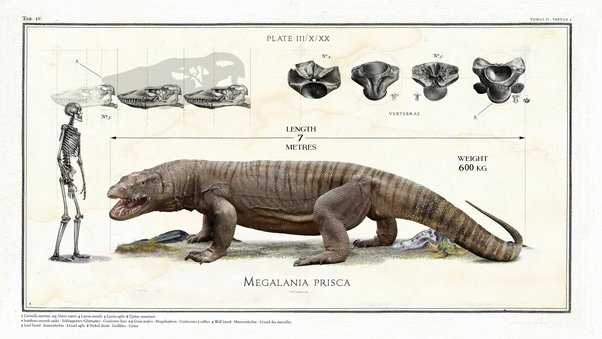
The Asian water monitor and the Komodo dragon exhibit different behaviors that are adapted to their respective environments.
The Asian water monitor is a highly adaptable and intelligent reptile. It is semi-aquatic and spends a significant amount of time in the water, hence its name. It is an excellent swimmer and diver, using its muscular tail to propel itself in the water. While on land, it moves with a distinctive, loping gait and can run at impressive speeds. It is known to be a solitary creature, with territories that can overlap with other monitors, but usually, they try to avoid each other.
The Komodo dragon, on the other hand, is a terrestrial reptile. It is known for its strong legs, which enable it to move quickly on land. Its muscular tail also helps in maintaining balance during fast movements. Komodo dragons are typically solitary animals, but they occasionally come together in small groups to feed on large carcasses. These groups are temporary and consist of territorial males and receptive females. Males compete fiercely for access to females, often engaging in combat.
Territorial Behavior
Both the Asian water monitor and the Komodo dragon exhibit territorial behavior. They mark their territories using scent glands, secretions, and visual displays.
Asian water monitors use scent markings to define their territory and communicate with other monitors. They have specialized glands near their cloaca that produce a distinctive musky odor. They rub their bodies against objects in their territory to leave scent trails. They may also use visual displays, such as inflating their throat and bobbing their head, as a way to intimidate rivals and establish dominance.
Komodo dragons also mark their territories using scent glands, but their method is slightly different. They have a gland on the underside of their tail called the femoral gland, which secretes a pungent odor. They use their hind legs to rub this gland on the ground, leaving behind a scent trail. Additionally, during the breeding season, males may engage in aggressive displays, such as standing upright, hissing, and mouth gaping. These displays are meant to assert dominance and attract females.
Feeding Behavior
The feeding behavior of the Asian water monitor and the Komodo dragon is also distinct.
The Asian water monitor is an opportunistic feeder and its diet consists of a variety of prey items. It is known to consume fish, frogs, snakes, turtles, birds, monkeys, and even carrion. It has a long, forked tongue that aids in detecting scent particles in the air, helping it locate potential prey.
The Komodo dragon, on the other hand, primarily feeds on carrion, but it is also a skilled predator. It has a unique adaptation in its teeth, with serrated edges that enable it to tear flesh efficiently. While hunting, it relies on its excellent sense of smell to detect the scent of a potential prey item from a distance. Once it catches its prey, it uses its powerful jaws to deliver a lethal bite, injecting venom into the victim. It then waits for the prey to weaken due to the venom before consuming it.
The Lifespan of Asian Water Monitor and Komodo Dragon
The Asian Water Monitor and Komodo Dragon are both fascinating creatures known for their impressive size and unique characteristics. One aspect of their lives that raises curiosity is their lifespan.
The Asian Water Monitor
In the wild, Asian Water Monitors face numerous threats and challenges, which reduce their average lifespan. Predation, habitat loss, human encroachment, and conflicts with humans all play a role in the shorter lifespan of these majestic creatures. Additionally, diseases and parasites can also impact their overall health and lifespan.
On the other hand, when kept in a controlled and suitable environment in captivity, Asian Water Monitors can thrive and live longer. Proper nutrition, adequate housing, and veterinary care are crucial for their longevity. These factors eliminate many of the threats faced in the wild and can significantly extend their lifespan.
The Komodo Dragon
One of the reasons for their extended lifespan is their isolation on a few Indonesian islands, which reduces their exposure to various threats. The absence of major predators and competition for resources allows them to live longer and reproduce successfully.
Additionally, their size and formidable hunting skills make them apex predators, which further contributes to their long lifespan. Komodo Dragons have fewer threats to contend with compared to Asian Water Monitors, which results in a longer average lifespan.
In captivity, with proper care and diet, Komodo Dragons can live even longer. They have been known to reach ages of 60 years or more in well-maintained zoos and facilities.
Conclusion
Conservation Status: Asian Water Monitor vs Komodo Dragon
The conservation status of the Asian Water Monitor and the Komodo Dragon is of utmost concern due to various threats they face in their natural habitats.
Asian Water Monitor
- This species has a wide distribution range across Asia, including countries like India, Sri Lanka, Bangladesh, Myanmar, Thailand, Laos, Cambodia, Vietnam, Malaysia, Indonesia, and the Philippines.
- Although the Asian Water Monitor is currently not considered endangered, it faces several challenges that could potentially harm its population.
- One of the major threats to the Asian Water Monitor is habitat loss due to deforestation, urban development, and agricultural expansion.
- Illegal hunting and poaching for its skin and meat also pose a threat to its population, especially in some countries where it is considered a delicacy or used in traditional medicine.
- Efforts are being made to promote the conservation of the Asian Water Monitor through protected areas and legislation to control illegal hunting and trade.
Komodo Dragon
- This species is endemic to the Indonesian islands of Komodo, Rinca, Flores, Gili Motang, and Padar.
- Due to its limited geographic range, the Komodo Dragon is more susceptible to threats and habitat disturbances.
- Habitat loss and fragmentation, primarily caused by human activities such as agriculture and infrastructure development, pose a severe threat to the survival of these dragons.
- Conservation efforts for the Komodo Dragon include the establishment of protected areas, captive breeding programs, and stricter law enforcement to combat illegal hunting and trading.
It is essential to prioritize the conservation of both the Asian Water Monitor and the Komodo Dragon to ensure the long-term survival of these magnificent reptiles and maintain the ecological balance in their respective habitats.
Asian Water Monitor vs Komodo Dragon: Interaction with Humans
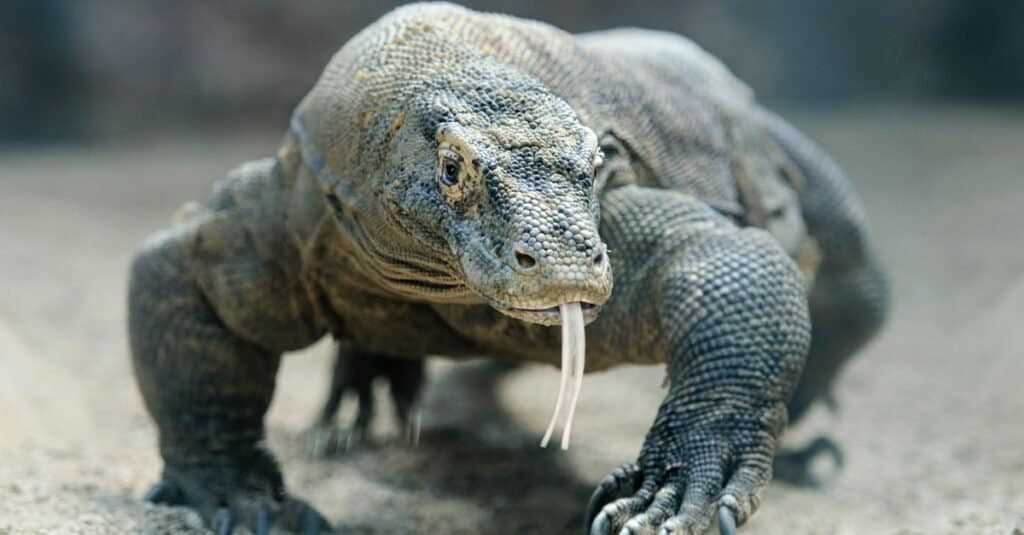
| Asian Water Monitor | Komodo Dragon | |
|---|---|---|
| Habitat | Near human settlements | Remote areas |
| Interaction with Humans | Occasional conflicts, rare attacks | Potential danger, caution advised |
| Conservation Status | Protected by law in some areas | Endangered |
Komodo Dragon vs Asian Water Monitor: Mythology and Cultural Significance
Both the Komodo Dragon and the Asian Water Monitor have a rich history of mythology and cultural significance within their native regions. These magnificent reptiles have captured the imagination of people for centuries, and their presence in various folklores, traditions, and beliefs adds to their allure.
In addition to their cultural significance, both the Komodo Dragon and the Asian Water Monitor have also found their place in popular culture. They have been featured in literature, movies, and artwork, which further portrays their mythological and symbolic significance.
Overall, the Komodo Dragon and the Asian Water Monitor hold a special place in the hearts and minds of the people in their respective regions. They continue to be celebrated and revered for their extraordinary characteristics, inspiring awe and fascination throughout the world.

I’m Lena Adams—a product of an unconventional upbringing in the African wilderness. My father, a daring explorer of African wildlife, sparked my fascination with reptiles, a passion that intertwined with the tragic loss of my mother during an expedition, leaving an indelible mark on my life. Driven to understand the creatures that captivated my parents, I embarked on my journey, sharing insights about reptiles, frogs, and lizards on my website. Through my explorations and conservation efforts, I honour my family’s legacy while seeking connections—to the creatures, nature, and the mother whose presence I yearn to understand.
